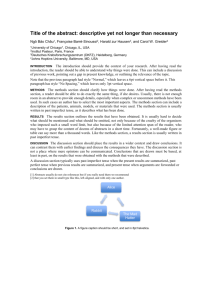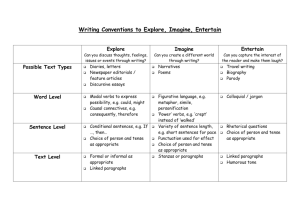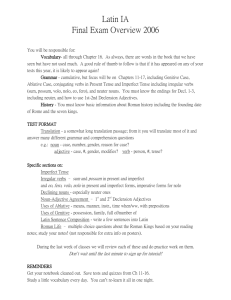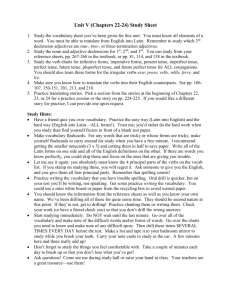Arabic XL 1A
advertisement
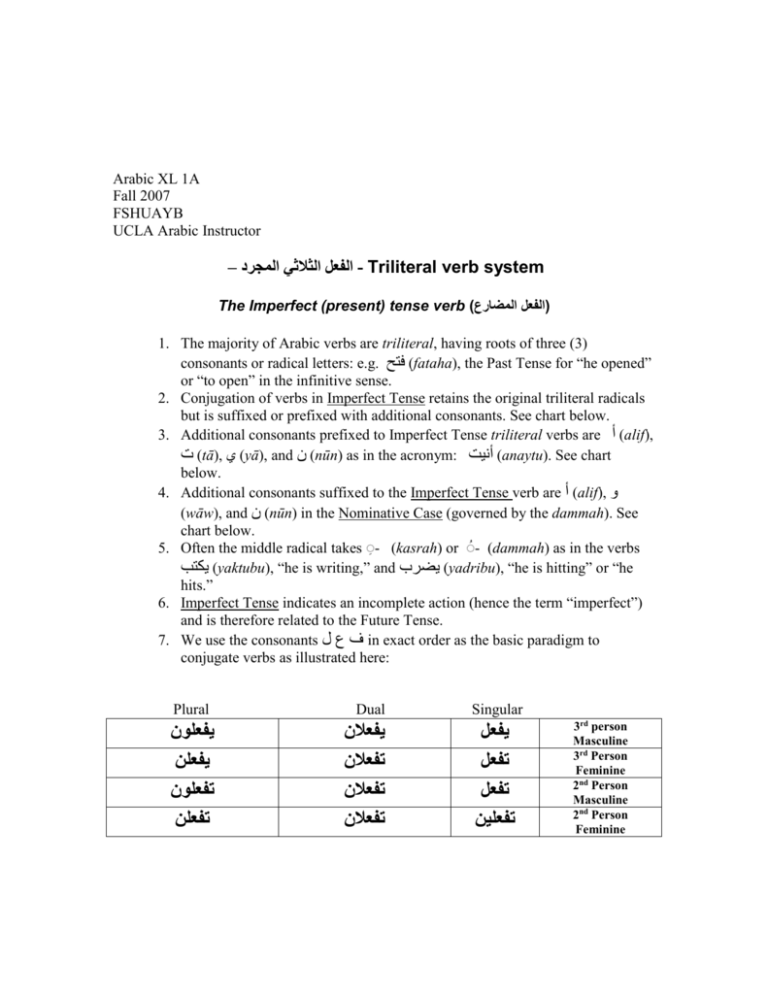
Arabic XL 1A Fall 2007 FSHUAYB UCLA Arabic Instructor – الفعل الثالثي المجرد- Triliteral verb system The Imperfect (present) tense verb ()الفعل المضارع 1. The majority of Arabic verbs are triliteral, having roots of three (3) consonants or radical letters: e.g. ( فتحfataha), the Past Tense for “he opened” or “to open” in the infinitive sense. 2. Conjugation of verbs in Imperfect Tense retains the original triliteral radicals but is suffixed or prefixed with additional consonants. See chart below. 3. Additional consonants prefixed to Imperfect Tense triliteral verbs are ( أalif), ( تtā), ( يyā), and ( نnūn) as in the acronym: ( أنيتanaytu). See chart below. 4. Additional consonants suffixed to the Imperfect Tense verb are ( أalif), و (wāw), and ( نnūn) in the Nominative Case (governed by the dammah). See chart below. 5. Often the middle radical takes ِ- (kasrah) or ِ- (dammah) as in the verbs ( يكتبyaktubu), “he is writing,” and ( يضربyadribu), “he is hitting” or “he hits.” 6. Imperfect Tense indicates an incomplete action (hence the term “imperfect”) and is therefore related to the Future Tense. 7. We use the consonants ف ع لin exact order as the basic paradigm to conjugate verbs as illustrated here: Plural يفعلون يفعلن تفعلون تفعلن Dual يفعالن تفعالن تفعالن تفعالن Singular يفعل تفعل تفعل تفعلين 3rd person Masculine 3rd Person Feminine 2nd Person Masculine 2nd Person Feminine نفعل - أفعل 1st Person Masculine/Feminine


